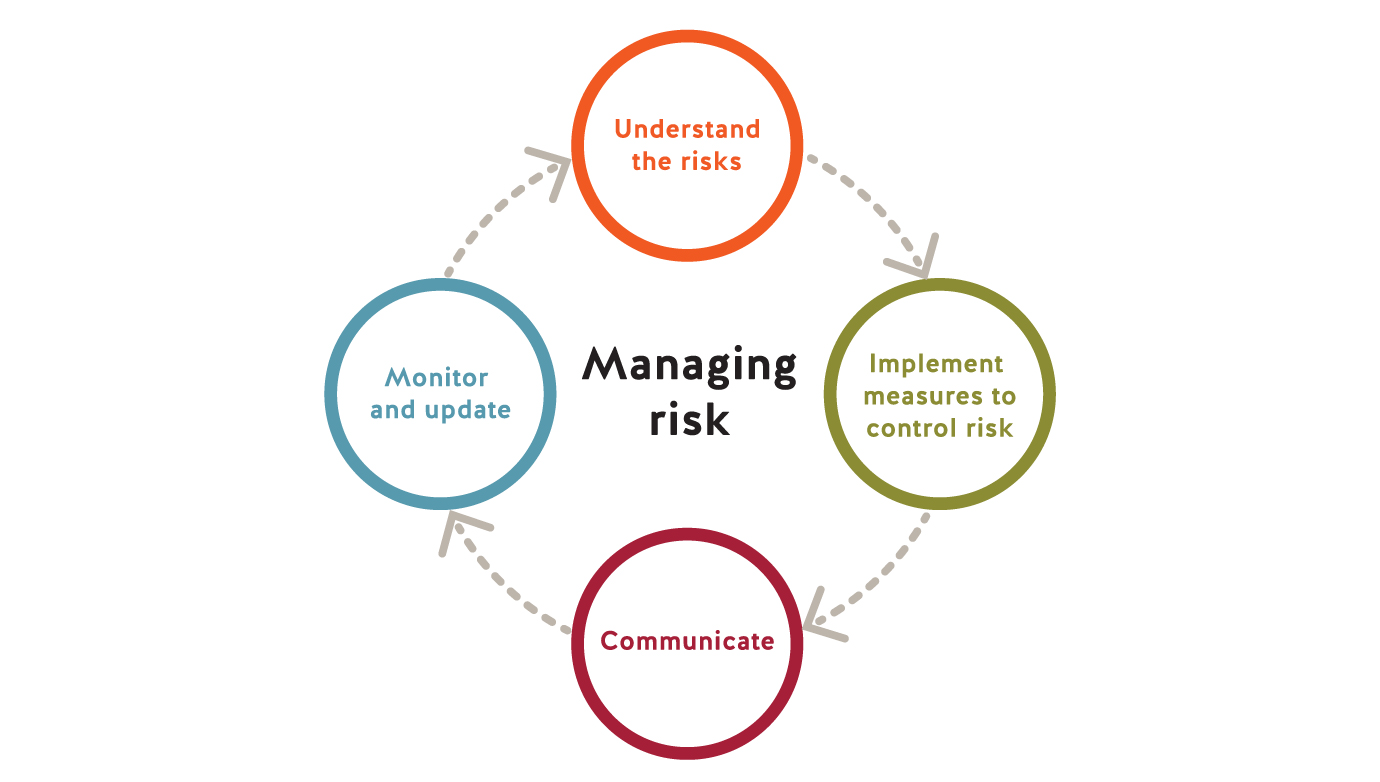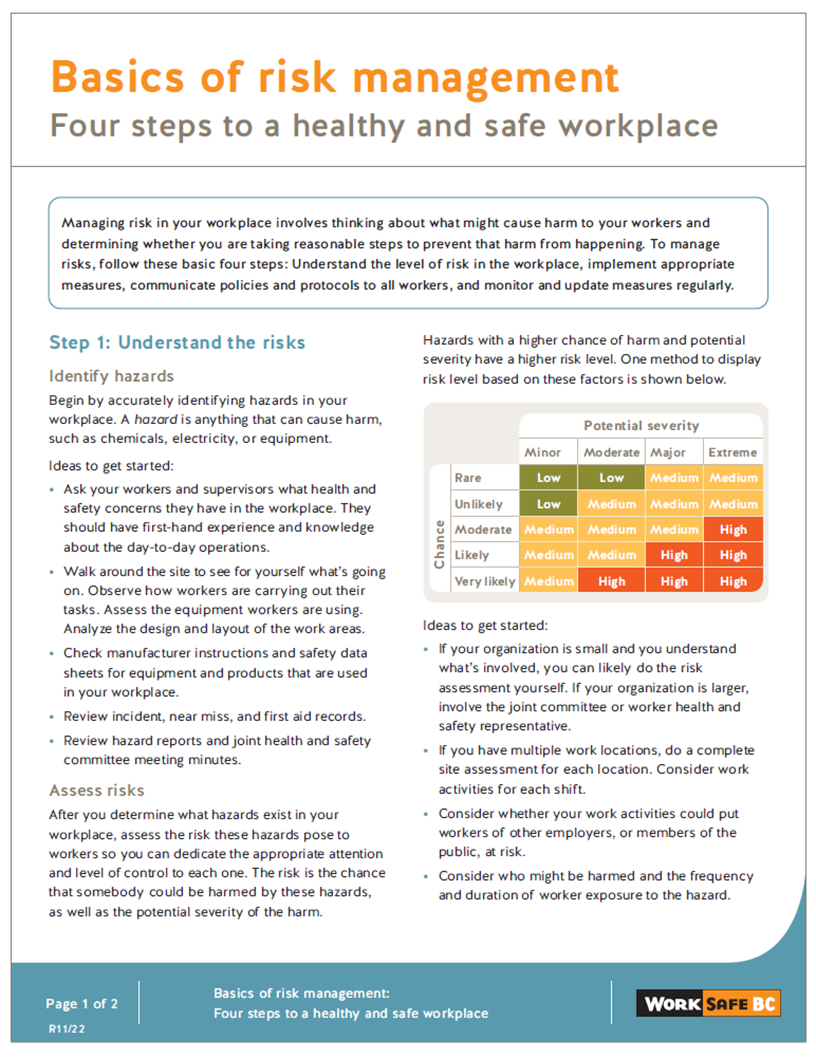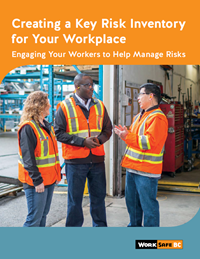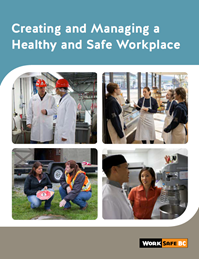Risk management basics
Risk management basics is a foundational element of many of our planned inspectional initiatives. This inspectional approach focuses on ensuring that a series of steps are followed so that the basics of risk management are implemented in the workplace. These steps are similar to those followed by many employers to develop a COVID-19 Safety Plan.
Through the risk management basics approach, workers and employers identify hazards and evaluate risks; implement appropriate controls to lower the risks, starting with the greatest risk first; communicate to ensure awareness of the risk management program; and then monitor the effectiveness of the measures and update them as necessary. By following these steps, you embed hazard identification and risk assessment in your daily work activities - leading to a healthier and safer workplace.
Understanding risk management basics
Managing risk in your workplace involves thinking about what might cause harm to your workers and determining whether you are taking reasonable steps to prevent that harm from happening.

The risk management basics approach includes the following steps for managing risk.
-
1
Understand the risks
Begin by identifying-hazards in your workplace. A hazard is anything that may cause harm, such as chemicals, electricity, or equipment.
After you determine what hazards exist in your workplace, the next step is to assess the risk these hazards pose to workers, so you can dedicate the appropriate attention and level of control to each one. The risk is the chance that somebody could be harmed by these hazards, as well as the potential severity of harm.
-
2
Implement measures to control risks
The greatest risk should be addressed first. If you cannot eliminate a risk, you’ll need to implement control measures to minimize it. The hierarchy of controls can help you select and implement more effective measures to control risks.
-
3
Communicate
Make sure everyone is aware of your risk management program. Provide managers, supervisors, and workers with orientation and training on how to identify hazards and what to do to control the risks. Document and share your safe work procedures and policies with workers.
-
4
Monitor and update
Monitor the effectiveness of the control measures in place and improve those that are not working as intended. Look for new or changing hazards and risks when you conduct your regular safety inspections, and make sure you are observing and supervising work activities that have a higher level of risk.
Worker engagement
For 2024 inspections, our risk management basics approach focuses on employers ensuring that efforts to manage risk are effectively communicated to workers and monitored through foundational occupational health and safety systems such as new and young worker orientations, training, supervision, incident investigations, worksite inspections, and (where applicable) joint health and safety committees that are effective, robust, and well supported.
To learn more about your requirements to have a joint health and safety committee and annually evaluate it, see joint health and safety committees.




